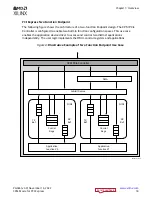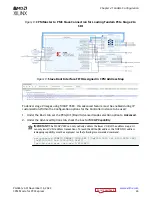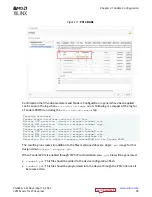
PCI Express Endpoint with AXI4 Memory Mapped Interface
This use case describes a PCI Express Endpoint functional unit that implements AXI4 Memory
Mapped (AXI-MM) interfaces. This functional block implements a soft logic bridge between the
native AXI4-Stream interface on the CPM PCIe controller and AXI4 Memory Mapped
interconnect.
PCI Express Endpoint Using Tandem PROM
This use case addresses the ability to configure the ACAP in two stages and bring up the PCI
Express protocol in less than 100 ms after power to the ACAP is stable. This is accomplished
through a staged configuration flow.
PCI Express Endpoint Using Tandem PCIe
This use case addresses the ability to initially load fully configurable PCI Express protocol
solution from a small external ROM, so as to meet the 100 ms configuration requirement. A PCIe
link is formed with a Root Complex or Switch component, which is subsequently used to
download the design that configures the rest of the ACAP. In this case the PCIe link is used by
the user application. This is accomplished through a staged configuration flow.
PCI Express Root Port Use Mode
Basic PCI Express Root Complex Use Case
The following figure shows a PCI Express Root Complex in the simplest form consisting of a PCI
Express Root Port to an AXI4 memory mapped bridge interfaced with the interconnect. The
interconnect consists of an Arm
®
-based processor system (PS) containing most of the critical
blocks such as CPU, memory controller and other important peripherals. One of the goals of this
use case is to minimize ACAP soft logic requirements.
Chapter 1: Overview
PG346 (v3.3) November 16, 2022
CPM Mode for PCI Express
20






























